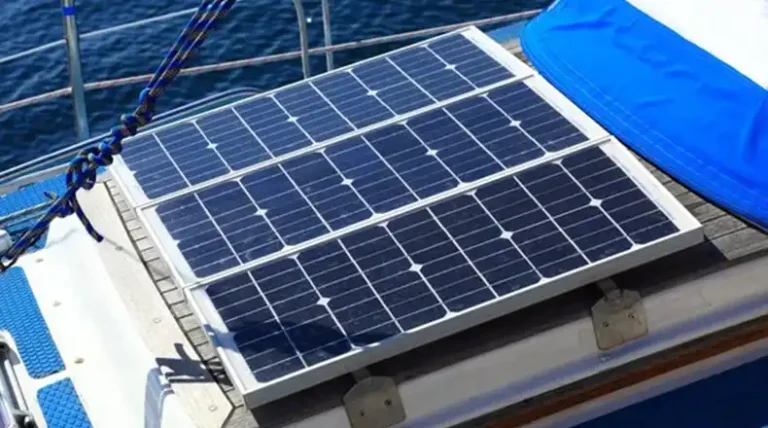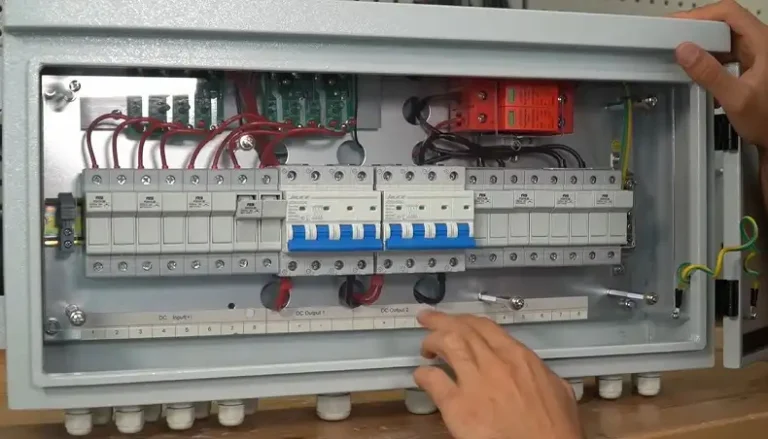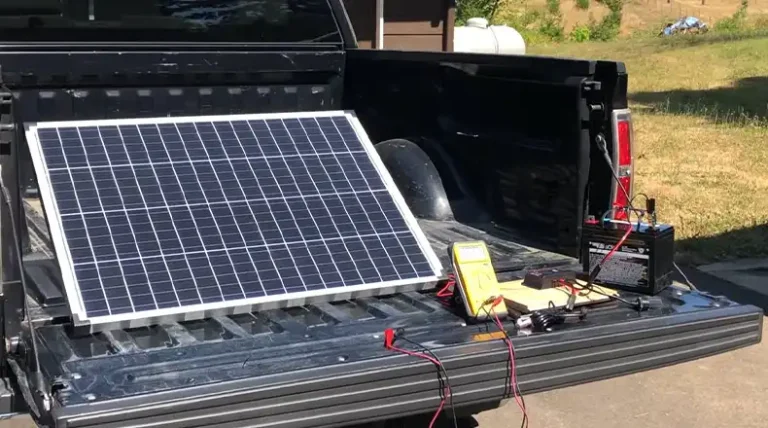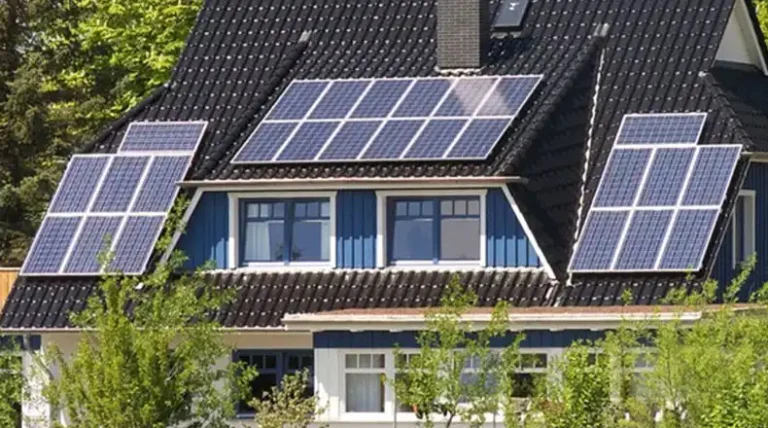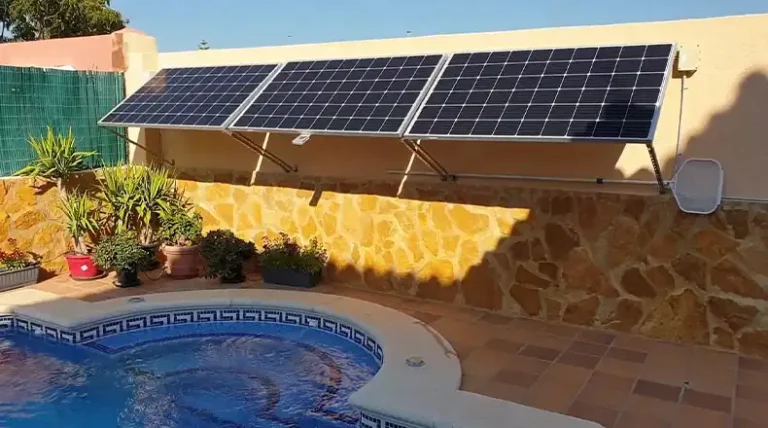What Color Light is Best for Solar Panels? Explained
Solar panels are devices that convert sunlight into electrical energy through a process called the photovoltaic effect. These panels are made up of numerous solar cells that absorb photons from sunlight and generate an electrical current. As the world moves towards renewable energy sources, understanding how to optimize solar panel efficiency is crucial.
One factor that impacts solar panel performance is the color of the light they receive. Different colors of light have varying wavelengths and energy levels, which can affect how well they are absorbed by the solar cells. Today, we will explain the relationship between light color and solar panel efficiency, and determine which colors are best for maximizing energy generation.
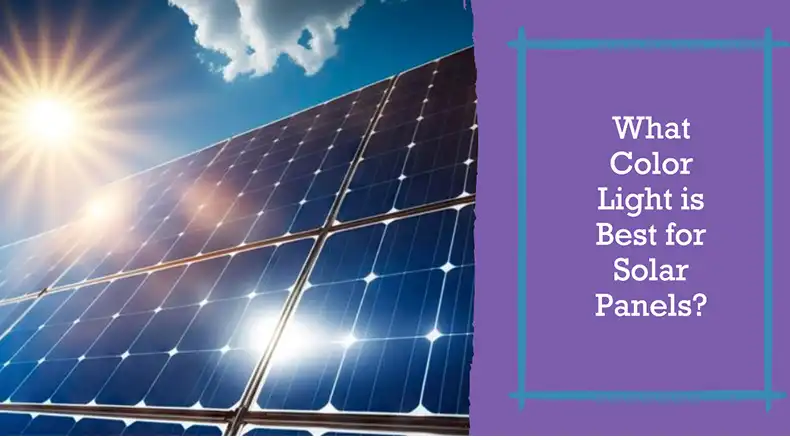
How Solar Panel Efficiency is Affected by Light Spectrum
Understanding the Light Spectrum
Light is a form of electromagnetic radiation that spans a range of wavelengths, known as the light spectrum. This spectrum includes colors that are visible to the human eye, such as red, orange, yellow, green, blue, and violet, as well as invisible wavelengths like ultraviolet and infrared.
How Solar Panels Absorb Light
Solar panels are typically made from silicon-based materials, which are designed to absorb specific wavelengths of light more efficiently than others. The amount of energy generated by a solar panel depends on the wavelength of the light it receives and how well the solar cells can absorb that particular wavelength.
Most silicon-based solar cells are optimized to absorb light in the visible and near-infrared range of the spectrum, with peak efficiency occurring around the red and near-infrared wavelengths. This is because the photons in these wavelengths have the right amount of energy to excite electrons in the solar cell material, generating an electrical current.
What Colors Are The Most Efficient for Solar Panels
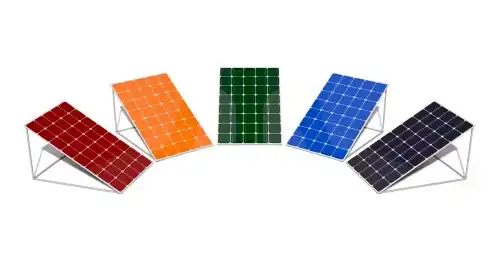
Black: For Solar Panels
The most common color for solar panels is black, as black surfaces are excellent at absorbing a wide range of wavelengths from the visible light spectrum. This is why the majority of solar panels on the market have a dark, black appearance.
There are two main types of solar panel technologies that contribute to this black color:
Monocrystalline Solar Panels: These panels are made from a single, continuous crystal of silicon, which gives them a uniform, dark appearance.
Polycrystalline Solar Panels: These panels are made from multiple crystals of silicon, resulting in a more textured, blue-ish hue than monocrystalline panels, but still appearing predominantly black.
Red and Yellow: For Light
While black solar panels are efficient at absorbing a broad range of light, they are particularly well-suited for absorbing red and yellow light. This is because the wavelengths of red and yellow light fall within the optimal range for silicon-based solar cells.
Red light has a longer wavelength (around 620-750 nanometers), while yellow light has a shorter wavelength (around 565-590 nanometers). These wavelengths correspond to the energy levels that are most efficiently absorbed by silicon solar cells, resulting in higher energy conversion rates.
Other solar panel technologies, such as thin-film solar cells made from materials like cadmium telluride or copper indium gallium selenide (CIGS), may have different optimal wavelength ranges. However, for the most common silicon-based panels, red and yellow light are the most efficient colors for energy production.
Other Factors Affecting Solar Efficiency
Anti-Reflective Coatings for Enhanced Absorption
To further improve light absorption and energy conversion efficiency, many solar panels are coated with an anti-reflective material. These coatings help reduce the amount of light that is reflected off the panel’s surface, allowing more photons to reach the solar cells and be converted into electricity.
Common anti-reflective coatings used in solar panels include silicon nitride, titanium dioxide, and magnesium fluoride. These coatings can increase the overall efficiency of the solar panel by several percentage points, depending on the specific technology and coating used.
Environmental Factors Affecting Solar Panel Performance
In addition to the color of light and anti-reflective coatings, several environmental factors can impact the performance of solar panels. These include:
Dust and Dirt Accumulation: Over time, dust and dirt can accumulate on the surface of the solar panel, reducing the amount of light that reaches the solar cells. Regular cleaning and maintenance are essential to maintain optimal performance.
Shading: Partial shading from nearby objects, such as trees or buildings, can significantly reduce the energy output of a solar panel. Proper site selection and layout design are crucial to minimize shading effects.
Local Weather Conditions: Factors like cloud cover, haze, and humidity can affect the intensity and quality of sunlight reaching the solar panels, impacting their overall efficiency.
While these factors are not directly related to light color, they can still have a significant impact on the overall energy production of a solar panel system.
Aesthetics and Building Integration
In some cases, the color of solar panels may be chosen for aesthetic or architectural reasons, rather than solely based on efficiency. Colored solar panels, such as red, blue, or green, are available for building-integrated photovoltaics (BIPV) or other applications where the appearance of the panels is a consideration.
It’s important to note that colored solar panels may have slightly lower efficiency compared to traditional black panels, as the pigments used in the coloring process can affect light absorption. However, advances in panel technology and coating techniques are improving the efficiency of colored panels, making them a more viable option for those who prioritize aesthetics without sacrificing too much performance.
Measuring Solar Panel Performance
Common Efficiency Metrics
To quantify and compare the performance of solar panels, several metrics are commonly used:
Watt-peak (Wp): This rating indicates the maximum power output of a solar panel under standard test conditions, typically measured in watts.
Energy Conversion Efficiency: This metric represents the percentage of sunlight that a solar panel can convert into electrical energy. Higher efficiency ratings indicate better performance.
These metrics are determined through standardized testing procedures, which simulate real-world conditions and allow for accurate comparisons between different solar panel models and technologies.
Real-World Efficiency Measurements
While laboratory tests provide a baseline for solar panel performance, real-world conditions can lead to variations in efficiency. Factors like temperature, humidity, and shading can all affect the actual energy output of a solar panel system.
To account for these variables, many solar panel manufacturers and installers conduct on-site performance measurements and monitoring. This data can be used to evaluate the actual efficiency of different colored solar panels under specific environmental conditions.
Real-World Examples: Comparing Panel Colors
To better illustrate the impact of color on solar panel efficiency, let’s consider some real-world examples:
| Panel Color | Watt-peak (Wp) Rating | Energy Conversion Efficiency |
| Black (Monocrystalline) | 300 Wp | 18-22% |
| Black (Polycrystalline) | 280 Wp | 15-18% |
| Red | 270 Wp | 14-17% |
| Blue | 260 Wp | 13-16% |
| Green | 250 Wp | 12-15% |
As you can see, traditional black monocrystalline and polycrystalline solar panels generally have the highest efficiency ratings, followed by red panels, and then other colors like blue and green.
However, it’s important to note that these numbers can vary based on the specific panel model, location, and environmental conditions. For example, a high-quality red solar panel installed in a sunny, low-humidity region may perform better than a lower-quality black panel in a cloudy, humid area.
Tips for Choosing the Right Solar Panel Color
While black solar panels are generally the most efficient option, there may be situations where colored panels are preferred or necessary. Here are some tips for choosing the right solar panel color:
Prioritize Efficiency: If maximizing energy production is your primary goal, stick with traditional black monocrystalline or polycrystalline solar panels.
Consider Aesthetics: If you’re concerned about the visual appearance of your solar panel installation, colored panels can be a good option for building integration or architectural purposes. However, be aware of the potential trade-off in efficiency.
Evaluate Local Conditions: Depending on your location and climate, certain colors may perform better than others. For example, red panels may be more efficient in areas with higher levels of red light due to atmospheric conditions or pollution.
Balance Priorities: If both efficiency and aesthetics are important, look for high-quality colored panels that minimize the efficiency trade-off, or consider a combination of black and colored panels to strike a balance.
Remember, the choice of solar panel color should be based on a careful consideration of your specific requirements, priorities, and local environmental conditions.
Summary
When it comes to solar panel efficiency, the color of light plays a significant role. While black solar panels remain the most efficient option for absorbing a broad range of wavelengths, red and yellow light are particularly well-suited for the silicon-based solar cells that dominate the market.
However, it’s important to consider factors beyond just color, such as anti-reflective coatings, environmental conditions, and aesthetic preferences. In some cases, colored solar panels may be a viable option for building integration or specific architectural applications, even if they sacrifice a small degree of efficiency.

